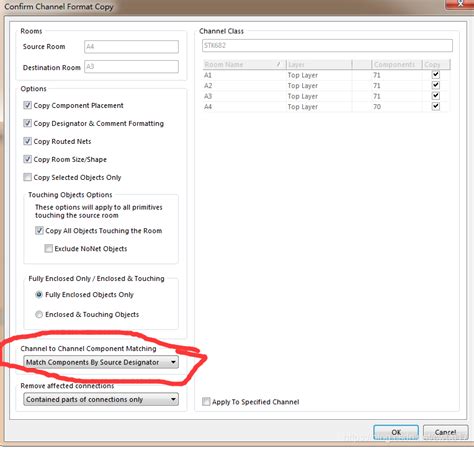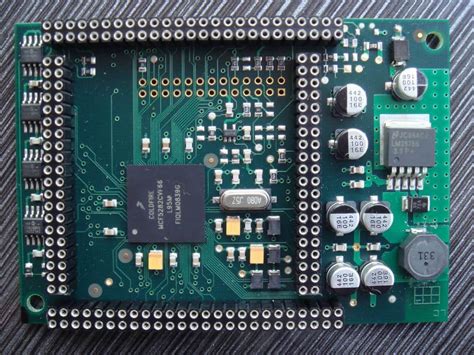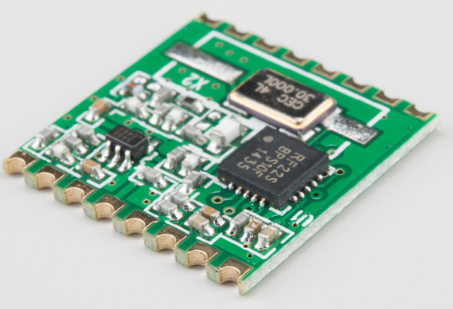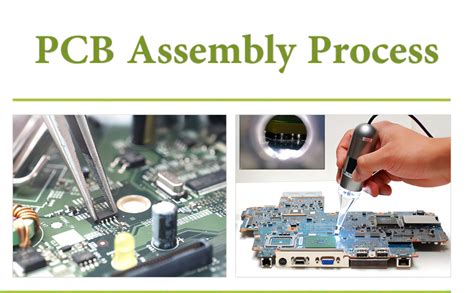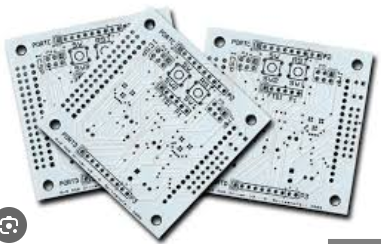Mastering Altium: A Guide to Multi-Board Assembly Success
Key Takeaways
When embarking on multi-board assembly using Altium, it’s crucial to keep several key factors in mind to ensure a successful outcome. Firstly, understanding the intricacies of PCB assembly and similar processes can significantly enhance your design cycles. The integration of various boards in a single project setting demands a sophisticated approach to design integration, where each component must communicate effectively within the larger system. This synergy is often achieved through meticulous attention to detail and the implementation of efficient design rules tailored specifically for PCBA projects.
In addition, facilitating effective communication among team members is vital, as it mitigates potential misunderstandings that could arise during the assembly process. Utilizing collaboration techniques such as regular updates and utilizing shared platforms can improve coordination among engineers and designers alike. Moreover, familiarity with Altium’s vast array of tools and features directly related to multi-board projects can streamline your workflow, making it possible to achieve faster turnarounds while maintaining high-quality standards.
By addressing these critical areas—design integration, team collaboration, and optimal workflow strategies—designers can navigate the complexities of multi-board assemblies with greater confidence, ultimately leading to superior outcomes in every PCBA endeavor they undertake.
Introduction to Multi-Board Assembly in Altium
In today’s rapidly evolving electronic landscape, mastering multi-board assembly is crucial for achieving successful product development. Leveraging tools like Altium can significantly streamline the PCB assembly process, ensuring that each component interacts seamlessly within the larger system. Understanding the complexities of PCBA involves not only technical design skills but also a robust strategy for design integration. Effective communication between teams is essential, as collaborative efforts can lead to innovative solutions that might otherwise be overlooked. By adopting a structured workflow within Altium, teams can enhance productivity, reduce errors, and maintain a clear focus on their end goals. As engineers navigate through the intricacies of multi-board projects, it becomes apparent that comprehensive planning and utilization of the right features within Altium are paramount to overcoming challenges associated with multi-board assembly. This guide will delve deeper into these strategies, illuminating the pathway towards optimized PCB development and successful implementation in future projects.
Key Principles of Design Integration
Effective design integration is crucial for successful multi-board assembly in PCB assembly and PCBA projects. To start, it is important to ensure that all components, including connectors and interfaces, are carefully designed to fit together seamlessly. This involves maintaining clear and concise documentation that outlines design intents and specifications for each board. The alignment of signal integrity and power distribution across multiple boards cannot be overlooked; thorough analysis during the design phase can prevent future functionality issues. Additionally, version control plays a significant role in promoting accountability among team members working on different board designs. By implementing a centralized repository for design files, teams can easily track changes and foster more efficient collaboration. Regular design reviews among the development team can also reveal discrepancies early in the process, ensuring a unified approach to achieving design goals. Lastly, utilizing Altium’s advanced features allows designers to visualize how each board interacts within the larger system, thereby enhancing the overall cohesiveness of the PCB assembly process. By embracing these key principles of design integration, teams can streamline their workflows and set the stage for successful multi-board projects that deliver optimal performance in various applications.
Effective Collaboration Techniques for Teams
In the realm of pcb assembly, effective collaboration among team members is crucial for ensuring smooth project execution. Teams engaged in multi-board assembly should prioritize open communication, utilizing tools that foster real-time feedback and detailed discussions. By establishing regular check-ins and collaborative platforms, team members can easily share insights regarding pcba challenges, thereby accelerating the resolution of issues that may arise during the design process. Additionally, employing version control systems allows team members to track changes and contributions transparently, ensuring everyone is on the same page regarding project progress. Integrating these collaboration techniques not only enhances design integration but also cultivates a culture of teamwork that drives innovation and speeds up development timelines. This holistic approach ultimately leads to higher quality outcomes in multi-board projects, empowering teams to navigate complexities with confidence and efficiency.
Streamlining Workflows for PCB Development
Efficient PCB assembly processes are critical to the success of any project involving multiple board designs. By refining workflows, teams can dramatically reduce cycle times and enhance communication between members. The integration of Altium into the multi-board assembly workflow offers several advantages; it allows designers to create comprehensive project views that streamline collaboration. With features such as version control and real-time updates, teams can tackle complex issues in PCBA early, minimizing the risk of errors during assembly. Utilizing a well-defined process also means establishing clear roles and responsibilities among team members, which can lead to more efficient problem-solving when challenges arise. Ultimately, by adopting strategies that focus on workflow optimization within Altium, companies can enhance their operational efficiency and ensure a smoother PCB assembly experience from design to production.
Tools and Features in Altium for Multi-Board Projects
In the realm of multi-board assembly, Altium offers a rich set of tools and features that significantly enhance the PCB assembly process. One such tool is the Design Reuse feature, which allows designers to leverage existing components across multiple designs, thereby streamlining the development cycle. This not only saves time but also reduces errors during PCBA processes.
Another essential feature is the Integrated Data Management system, which facilitates better collaboration among team members. By using a centralized repository for design files, teams can share updates in real time, ensuring that everyone is on the same page throughout the development journey.
For those tackling more complex projects, Altium’s Multi-Board Layout functionality enables seamless integration of multiple boards into a single project file. This functionality enhances visibility and control across all boards involved, making it easier to coordinate updates and changes efficiently.
Key Features Overview:
| Feature | Benefits |
|---|---|
| Design Reuse | Increases efficiency by reusing components |
| Integrated Data Management | Supports real-time collaboration among team members |
| Multi-Board Layout Functionality | Allows integration of multiple boards into a single project view |
“Utilizing Altium’s advanced tools can significantly reduce development times and improve accuracy in multi-board assembly projects.”
Additionally, utilizing features like Signal Integrity Analysis can help identify any potential issues early on in the design stage. This proactive approach not only enhances reliability but also ensures that every PCB assembly meets high quality standards before moving into production. By harnessing these tools effectively, teams can elevate their workflow to meet growing demands in PCBA, leading to successful implementations across various industries.
Troubleshooting Common Multi-Board Assembly Challenges
In the realm of multi-board assembly, various challenges can emerge, complicating the efficient execution of PCB assembly projects. One significant hurdle is ensuring proper communication between diverse teams involved in various stages of the design. Misalignment in pcba specifications or expectations can lead to costly mistakes and delays. To mitigate these issues, establishing a robust communication framework that incorporates regular updates and collaborative sessions can be beneficial. Additionally, addressing any discrepancies early in the design phase will create a smoother workflow and enhance overall project synergy.
Another challenge can arise from managing design integration between multiple boards. Engineers must meticulously ensure that all components fit together seamlessly and work reliably as an interconnected system. This often requires extensive simulations and tests to validate interactions across different boards before finalizing the assembly. Using tools available in Altium, such as real-time design rule checks, can help reveal potential conflicts before they escalate into problems during assembly.
Lastly, optimizing manufacturing workflows for multi-board assemblies is crucial for timely project delivery. Constraints such as limited resources or unexpected production setbacks can impede progress. Implementing an agile approach that allows for quick adjustments in response to real-time feedback can enhance production efficiency and help teams adapt to unforeseen challenges in their pcb assembly processes. By focusing on these areas—communication, integration, and workflow optimization—teams can navigate common multi-board assembly challenges with increased confidence and success.
Best Practices for Successful Implementation
Implementing multi-board assembly in Altium requires careful consideration of several best practices to ensure seamless execution. First and foremost, establishing a clear and effective communication channel among the team members is vital. By utilizing collaborative tools integrated within Altium, teams can share updates, manage revisions, and address issues in real time. This not only accelerates the design process but also enhances overall team dynamics. Additionally, maintaining a well-organized project structure is crucial. A clear hierarchy of components and an intuitive layout make it easier to manage layouts for both PCB assembly and assembly processes involved with multiple boards.
Furthermore, leveraging the powerful features of Altium can significantly reduce design errors. Utilizing design rule checks (DRC) ensures that all parameters meet specified requirements before proceeding with the PCB assembly phase. Implementing version control measures also plays a crucial role; it helps track changes made during the development process, thereby minimizing discrepancies in the final output.
Lastly, it is beneficial to create a proactive troubleshooting plan. Anticipating potential issues during the PCBA process allows teams to address them promptly, ensuring a smoother assembly workflow. Keeping these best practices in mind will not only improve efficiency but also contribute significantly to the successful implementation of multi-board projects within Altium.
Case Studies: Real-World Applications of Multi-Board Assembly in Altium
In the realm of PCB assembly, multi-board projects have become increasingly prominent due to their complexity and performance demands. Recent case studies illustrate how companies have leveraged Altium for pcba excellence, resulting in significant enhancements in both design and production processes. For instance, a leading automotive manufacturer implemented a multi-board assembly approach utilizing Altium’s advanced capabilities to integrate several circuit boards into one seamless assembly. This not only reduced the overall footprint of their electronic systems but also improved the efficiency of the manufacturing process.
Another compelling example can be seen in consumer electronics, where a startup harnessed Altium to streamline their PCB assembly workflows. By employing collaborative techniques within Altium, teams were able to work concurrently on different board designs, leading to faster time-to-market without compromising on quality. The integration of real-time updates allowed for proactive troubleshooting, ultimately enhancing the reliability of their products. These cases underscore the transformative potential of multi-board assembly in pcba, demonstrating its practicality across various sectors while showcasing how effective use of design tools can lead to remarkable innovations and improvements in product development cycles.
Conclusion
In wrapping up the discussion on multi-board assembly with Altium, it is essential to recognize the significance of mastering this process for achieving superior PCB assembly outcomes. The integration of design principles and effective collaboration techniques plays a crucial role in streamlining the overall workflow. By employing the innovative tools and features available in Altium, teams can address the complexities often associated with multi-board designs. This approach not only mitigates challenges but also cultivates an environment conducive to efficient teamwork and project execution. Ultimately, focusing on these key areas not only enhances the quality of PCBA projects but ensures that the final products meet stringent industry standards and customer expectations. Implementing best practices throughout the design phases leads to more successful project outcomes, enabling teams to produce reliable and innovative electronic solutions.
FAQs
Q: What is multi-board assembly in relation to PCB design?
A: Multi-board assembly refers to the process of designing and integrating multiple PCB layouts into a single system. It ensures that different boards work harmoniously together, enhancing overall functionality.
Q: How does Altium enhance the multi-board assembly process?
A: Altium provides several tools and features specifically designed for multi-board projects. These tools facilitate design integration, streamline workflows, and promote effective team collaboration throughout the PCBA process.
Q: What are some common challenges in multi-board assembly?
A: Typical challenges include managing signal integrity between boards, maintaining design consistency, and coordinating changes among team members. Proper planning and using efficient collaboration techniques can help alleviate these issues.
Q: Can best practices in multi-board assembly lead to improved productivity?
A: Yes, adhering to best practices such as standardized documentation, effective communication, and thorough testing protocols can significantly enhance productivity and reduce errors during the pcb assembly process.
Q: Where can I find additional resources for PCB assembly services?
A: For more information on efficient PCB assembly services, please click here Andwin PCB Assembly.

